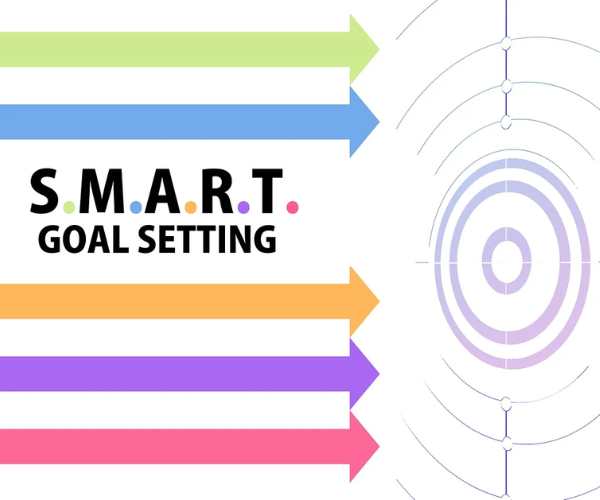
In the realm of business leadership, harboring a goal-oriented mindset is not just desirable – it’s essential. As a CEO, your objectives act as the compass guiding your organization towards success.
Recent studies have revealed compelling figures favoring this approach: companies practicing systematic goal-setting witnessed a whopping 39% surge in productivity. Astonishingly, this figure leaped to 57% when backed by top management’s endorsement.
The power of a goal-oriented mindset, therefore, cannot be underestimated. It’s the lynchpin to growing a successful, thriving business.
Browse our online courses on meditation, positive thinking, overcoming procrastination, confidence, and freedom from distractions.
Join us as we delve deeper into developing, maintaining, and leveraging this powerhouse mindset to fuel your corporate journey.
Understanding the CEO’s Role in Goal Setting
As a CEO, your role in goal setting is pivotal. You’re not just setting targets; you’re forging the path ahead, shaping your company’s destiny. However, the process can be challenging, requiring strategic thinking and steadfast commitment.
In the following sections, we’ll explore CEO success strategies to help you effectively navigate this vital role, empowering you to drive your company to greater heights.
Defining Organizational Objectives
Defining organizational objectives is a fundamental task for CEOs. This process involves crystallizing the mission, vision, and core values of your business into focused, measurable goals. Objectives should be concise, achievable, and aligned with your strategic plan.
Precise targets provide a roadmap for the company’s trajectory, laying the groundwork for success. Each objective should have a time frame, ensuring a firm deadline to work towards.
Remember, these goals should be flexible – they need to adapt to market changes, new trends, or unforeseen challenges. Through clear, well-defined objectives, you can guide your team toward the end goal and measure progress.
Aligning Personal Goals with Company Vision
Aligning personal goals with your company’s vision is a crucial facet of effective leadership. This alignment fosters a sense of unity and direction, enhancing overall productivity.
It involves identifying the intersection between your personal objectives and the company’s mission. This process compels you to delve into your aspirations, examining how they support the strategic plan.
In essence, it’s about networked thinking, where your personal growth contributes to the organization’s development.
Achieving this alignment also bolsters employee morale, demonstrating that their leader shares the company’s aspirations. It’s a powerful demonstration of commitment, enhancing trust and fostering a more motivated, engaged workforce.
Notably, such alignment is not a one-off event-it’s an ongoing, dynamic process requiring regular reassessment and adjustment.
The Psychology of Goal Setting
Goals are not just a roadmap for success – they are deeply entwined with our psyche. Understanding this connection can elevate your leadership and drive your business forward.
In the following sections, we will dissect this intricate relationship, offering insight into the psychological components of goal setting. We’ll explore how you can harness this knowledge to cultivate a goal-oriented mindset, accelerating your journey to CEO success.
Cognitive Processes Involved in Goal Setting
Setting goals involves a complex interplay of mental processes. Here’s how it usually happens:
- It begins with perception – identifying what you want to achieve.
- This leads to decision-making, choosing achievable, specific objectives.
- The third stage is planning and devising a strategy to attain these goals.
- Lastly, there’s the critical process of monitoring progress and adjusting plans as necessary.
The Power of Positive Thinking
The power of positive thinking is a potent tool in the CEO’s arsenal. It fuels optimism, engenders resilience, and sparks creativity, critical ingredients for goal accomplishment.
Embracing positive thoughts can mitigate stress, enhancing decision-making capabilities.
Moreover, a positive outlook can inspire and invigorate your team, fostering a harmonious, productive work environment. Lastly, it instills perseverance, a critical trait for navigating the complex corporate landscape.

Setting SMART Goals
In the realm of goal-setting, the SMART framework stands as a beacon, guiding leaders in achieving clear, actionable objectives. This powerful tool transforms vague ambitions into structured, achievable targets.
Join us as we delve into each element of SMART, revealing how it can empower your strategic planning.
Specific
Specificity in goal setting is about defining your objectives with precision. It’s moving beyond vague intentions and focusing on clear-cut, detailed outcomes.
Specific goals eliminate ambiguity, providing a clear picture of what success looks like. They also make it easier to track progress and gauge success, thereby facilitating effective decision-making.
A specific goal could be as straightforward as “Increase the company’s annual revenue by 10% within the next fiscal year.”
Measurable
Measurable goals are quantifiable and trackable. They establish concrete evidence of progress by setting benchmarks that can be seen and evaluated.
This characteristic allows for periodic measurement of the progress being made, providing a clear indication of how close or far you are from achieving the set objective.
It also facilitates accountability, ensuring all stakeholders are informed and engaged in the goal’s progress. An example of a measurable goal could be “Increase customer retention rates by 10% in the next quarter.”
Achievable
Achievable goals are realistic and attainable, not just wishful thinking or lofty dreams. They require an honest assessment of resources, capabilities, and constraints to ensure practicality.
Setting achievable goals promotes motivation as they are within reach, encouraging progress and boosting morale. It creates a beneficial balance between challenging and attainable, fostering growth without fostering disillusionment.
Relevant
Relevance in goal setting pertains to the suitability of the goal to your needs and interests. It’s about ensuring your objectives are tightly connected to your mission and vision.
A relevant goal aligns with established goals and has clear short-term and long-term benefits. Importantly, it resonates with your team, ensuring everyone is invested in its achievement.
Time-Bound
Time-bound goals refer to objectives set within a specified timeframe. Creating a deadline instills a sense of urgency and focus, driving forward momentum.
A definite timeline also provides an endpoint for goal evaluation, allowing you to measure success and adjust future goals accordingly. Importantly, time-bound goals should be realistic and considerate of other commitments to avoid unnecessary pressure.
The MECE Principle for Goal-Setting
The MECE principle, an acronym for Mutually Exclusive, Collectively Exhaustive, stands as a robust framework for problem-solving. Developed by McKinsey & Company in the 1960s, it aids in structuring and framing business challenges.
It’s designed to encompass all possibilities without overlapping, ensuring thorough analysis and valuable insights. This effective strategy fosters a systematic, goal-oriented mindset pivotal for CEO productivity.
Here’s a rundown:
Mutually Exclusive
Mutually exclusive refers to a scenario where only one option can occur at a time. In business terms, it’s when two strategic goals cannot coexist.
For example, a company cannot cut costs drastically while aiming to increase the quality of its products simultaneously. This concept emphasizes the importance of making clear, decisive choices in goal setting, eliminating conflicts, and ensuring focused efforts.
Collectively Exhaustive
Collectively exhaustive refers to covering all possible options in problem-solving or decision-making. It ensures every conceivable scenario is considered, leaving no stone unturned.
This comprehensive approach aids in identifying all potential paths to achieving a goal, enhancing the likelihood of success. It underscores thorough analysis, promoting a meticulous, systematic goal-setting approach.
How Can We Apply This to Business Goals?
Applying the MECE principle to business goals begins with ensuring each objective is standalone, reducing the potential for conflicting efforts. Then, outline all possible routes towards these goals, exhaustively exploring every strategy.
This comprehensive approach ensures no potential solution is overlooked, maximizing the chances for successful goal achievement.
Tools and Techniques for Staying on Track
Now that you’re well-versed in SMART and MECE principles, it’s time to stay on track. Our journey doesn’t end at setting goals; success lies in achieving them.
In the upcoming sections, let’s explore some indispensable tools and techniques that can help keep your objectives in sight and your productivity soaring.
Time Management Strategies
Effective time management strategies include prioritization, delegation, and the use of digital tools. Prioritization involves arranging tasks based on their urgency and importance. Delegation allows for efficient workload distribution.
Meanwhile, digital tools like task management software provide automated alerts and reminders, enhancing time efficiency.
Accountability Systems
Accountability systems serve as integral mechanisms to maintain progress toward set goals.
These systems foster responsibility, ensuring tasks are completed on time. They can range from simple checklists to advanced software solutions. Regular updates and reports promote transparency, keeping all stakeholders informed.
Leveraging Other Technologies
Leveraging other technologies can further simplify goal tracking and increase productivity. Advanced software solutions provide real-time updates and analytics. Artificial Intelligence (AI) can automate routine tasks, saving valuable time.
Cloud-based platforms facilitate seamless collaboration across teams. These technologies, when used effectively, can significantly boost efficiency and goal attainment.
From Vision to Victory: Cementing Your Legacy as a Goal-Oriented CEO
Transitioning from vision to victory is a journey laden with strategic decisions, astute time management, and unwavering commitment.
As CEOs, your goals are the compass guiding this voyage, serving as beacons illuminating the pathway toward overarching success.
Harnessing the power of SMART and MECE principles, coupled with practical tools and techniques, can streamline your pursuit, transforming abstract visions into tangible victories.
Remember, in leadership, the journey is as significant as the destination. Every stride towards your goals fosters personal growth and team development, laying the foundation for the legacy of a goal-oriented CEO.
Endowed with a steadfast resolve and the right strategies, you are well-equipped to chart your course to victory, inspiring everyone in your wake.
In conclusion, the journey to CEO success is not a sprint but a marathon, and the tips shared in this blog post are your hydration points. Apply them consistently, and watch your productivity soar as you stride confidently toward your vision.

